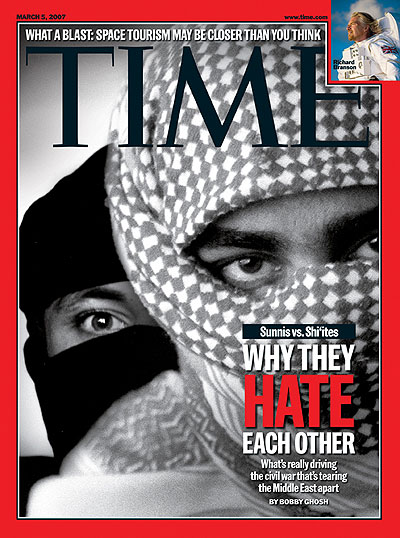 Some of the world's most important religion-news stories are also the hardest for your GetReligionistas to write about because they happen over and over and over. Are we supposed to do a post a week on some of these topics? Criticize the same holes in mainstream stories again and again?
It's hard. Trust me.
Some of the world's most important religion-news stories are also the hardest for your GetReligionistas to write about because they happen over and over and over. Are we supposed to do a post a week on some of these topics? Criticize the same holes in mainstream stories again and again?
It's hard. Trust me.
Take, for example, coverage of human-rights stories linked to life in majority Muslim lands – especially stories linked to the persecution of religious minorities. The key issue is whether the press buys and sells the familiar argument that these conflicts are actually about politics and economics, not religion. No matter what the mobs are yelling about God and Sharia, these stories are, supposedly, sparked by class conflict, ethnic concerns, etc. Truth be told, these tragedies are driven by multiple factors – including religion.
One of the news subjects that, over the past decade, has frustrated me the most is the bloody split between Shia and Sunni Islam. How is the American public supposed to understand the recent history of Iraq without understanding that deep and bitter divide? Yet, day after day, week after week, year after year, American newsrooms produce floods of ink on these conflicts without giving readers any information about why this divide exists in the first place. There have been a few exceptions – such as this Time cover story.
I used to write posts on this subject all of the time.
I quit, after GetReligion readers responded with waves of apathy – which is often the case with posts about international stories, especially those centering on coverage of human rights. We need more liberal readers, I guess, in the old meaning of the word "liberal."
Anyway, The Washington Post recently served up another long news story of this kind that ran under this simple headline: "Shiite protests pose major challenge for Saudi Arabia." The top of this report tells a familiar story:
AWAMIYA, Saudi Arabia -- This much is beyond dispute: Khalid al-Labad is dead.
Labad, 26, and two teenage relatives were fatally shot by police Sept. 26 as they sat in plastic chairs on the narrow sidewalk in front of their house in this broken-down little town in the far east of Saudi Arabia. To police, Labad was a violent “menace” wanted for shooting two police officers, killing another man and attacking a police station. To human rights advocates, he was a peaceful protester silenced by the government for demanding equal rights for the country’s oppressed Shiite Muslim minority.
The killing of Labad and the two teens marks an escalation in Saudi Arabia’s worst civil unrest in years. The sectarian uprising in the kingdom’s oil heartland has been an often-overlooked front in the wave of revolts remaking the Middle East.
Yes, there are major political and economic components to this story, starting with the tensions between Iran and Saudi Arabia. But this is also a story about the treatment of a minority form of Islam in the context of a majority Sunni culture. It's a story about a religious minority, in other words, even though Islam is – inaccurately and simplistically – often portrayed as a monolithic religion.
So why do the Shia and Sunni clash? What are the historical and, thus, doctrinal roots of this conflict?
As usual, Post readers learn nothing about that. Nothing at all. There is no room, in this long report, for even a paragraph or two on the "why" in this who, what, when, where, why and how equation. The following is interesting, but it's simply not deep enough:
Shiites, who form a majority in Iran, have long been treated as second-class citizens by the ruling Sunni elite in Saudi Arabia. They account for about 10 percent of the country’s 28 million people and are concentrated here in the Eastern Province’s industrial center, sandwiched between the vast Arabian desert and the glistening Persian Gulf.
The death toll here – 14 civilians and two police officers since the beginning of last year – is small compared with those in recent rebellions in other Arab countries, especially the civil war in Syria. And, unlike elsewhere, protesters here are not demanding the overthrow of their government. They want long-denied basic rights: equal access to jobs, religious freedom, the release of political prisoners. But in a nation where even peaceful protests have long been banned, the clashes between police and demonstrators have become a big concern for King Abdullah and his ruling family.
So what are the differences between these two communities and how do they affect daily life? How do they affect the content of Islam and Islamic law? What is the difference between a Sunni mosque, of which there are many in Saudi Arabia, and Shia mosques, of which there are few? What happens if a Shia Muslim tries to pray in a Sunni mosque? Etc., etc.
Are there economic elements in this conflict? Of course there are and this story covers them well. Ditto for the ties into larger Middle East conflicts. The story covers a wide variety of important themes – pretty much everything except, of course, religion.
Sorry, but I felt the urgent need to point this out. Again.
